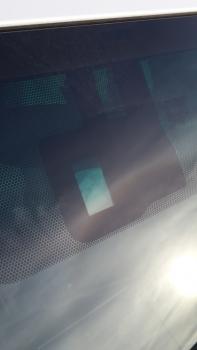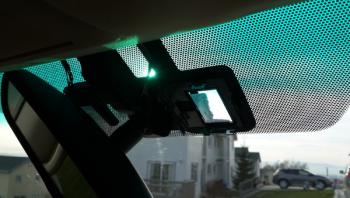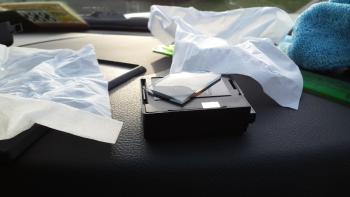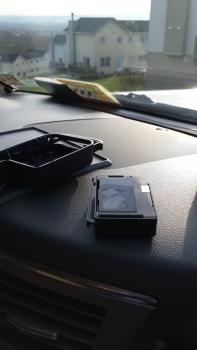
eugene.s
Community Supporter-
Posts
232 -
Joined
-
Last visited
-
Days Won
2
Content Type
Profiles
Forums
Events
Gallery
Store
Articles
Videos
News & Articles
Everything posted by eugene.s
-
Check Engine + VSC lights on the dashboard are probably nothing serious. Look up for key words in the GX470 thread. If having done that you cannot figure it out, write back at their thread.
-
Hi, Neya, If your transmission doesn't switch - his may not necessarily require the whole transmission changed. Maybe it was electrical issue, maybe mechanical - no one can judge from your explanation. Why do you believe you need to change it, give us some more reasons. No one could help you here any better unless you explain more (e.g. explanations given by a mechanic) By the way, have your checked the fuses?
- 4 replies
-
- Transmission
- VSC
-
(and 2 more)
Tagged with:
-
Need Help To Resolve Cold Start Problem
eugene.s replied to Phua's topic in 04 - 09 Lexus RX330 / RX350 / RX400h
You need to tell us more. After which events did the problem arise? (in particular, after or before the mentioned service)? When was the service done and what else was done during the service? Before the problem arose, did you take fuel from any gas station which you've not used before? Is you battery good enough? The simplest test: in dark time: after having the engine off for 5+ hours, try the ignition "on" (but don't yet start the car), turn on your headlights while the ignition is "on", and then start the engine while watching at your headbeams. If the beams from the headlight get much worse during the ignition (compared to the beam while the ignition was in "ON") - probably it's the poor battery. Some batteries have an "eye" on them for checking their status. It look like a round looking like "glass" at the top of the battery. Looks like such batteries are not commonly used in the States, but if your battery has an "eye" - look at it (if green = good; if black of red, depending on the make = needs recharge; if black = replace the battery). If nothing helps - try some good electric/mechanic. Indeed, the poor start may be caused by a variety of reasons (to add to the aforementioned, the starter, compression level, etc.) - but most of these should be easily checkable during computer diagnostics... -
Vsc Trac, Vsc Off, Skid, Check Engine Lights On - C1340/47
eugene.s replied to rdg's topic in 03 - 09 Lexus GX470
From the lights on your dashboard, probably nothing to worry about -- read e.g. here. Am sure there's much more on this forum - try to search by key words! I don't know about the particular code with you gave -- really, the mechanic should have told you what it means (if he is a good mechanic, of course). From my experience, the code name you gave is something off-spec. Probably you typed it incorrectly??? -
Hi there, try looking at this thread re your key. As to what happened to your car, register at the Lexus site, enter your car's VIN number and find "car history" or alike tab -- the website will give you the vehicle history as recorded by the Lexus dealers who served the car (I find it quite comprehensive). Alternative sources for checking which problems were reported on your car are Carfax or Carcheck (I found the first to be more informative than the latter) - however, you'd have to pay some fee for any these two.
-
Need Help To Resolve Cold Start Problem
eugene.s replied to Phua's topic in 04 - 09 Lexus RX330 / RX350 / RX400h
The problem may be caused by a variety of reasons - the plugs may require replacement, fuel system may require cleaning or other hardware defects, including poor fuel pressure as advised before (though, this is probably unlikely as you'd have some lights on on the dashboard in such case). Most of problems can be diagnosed electronically (i.e. without having to get into the engine compartment) - try getting to a dealer or a good electric mechanic. -
Rick, a classic example of a drained car battery - recharge or replace it. You've been lucky that your car started when you needed it!
-
Hi, Try this and revert if this doesn't help: (1) register your car on a Lexus site here. The exact given link may be "broken" - search within the Lexus site on how to register. Do your best, but revert if any issues. Have your car's VIN and your home address to register. Once registered, you could check a complete service record of your car (as long as it has been serviced by a Lexus dealer - such history would usually be much more complete than a CarCheck or other "history" databases). There is also a link there to check if any TSBs are applicable to your vehicle. Check for any TSB's. TSBs stand for Technical Service Bulletins. In other words, this is a Lexus response to any commonly reported issues with their cars. On the scratch (from your ambiguous explanations), your issue sounds much of a famous rear drive shaft issue. However, there may well be other explanations to what exactly you experience. If you get any TSBs for your car, you'd probably know what you have to do about your car. (2) If you see any TSB's applicable to your particular car or not, I'd still recommend going to a Lexus dealer for a check. Your car (2003) is clearly out of warranty, but their checking it (at a cost) might still be worth while. If smth is not reflected in Lexus' TSB's, who might have the best understanding of a problem with a 2003 (which has been on a market for >10 years) Lexus car if not them? Check what they think needs to be checked/repaired (and oversea their actions in isolating a problem) and link this as to what others though need to be repaired. Bear in mind that as this forum's user, you have a discount for any spare parts with Sewells Lexus online shop. (google for them and register there; If after that you still couldn't figure out how to get a discount, revert). (3) otherwise I'd recommend: (3.1.) check tire pressure of your tires (3.2) check that rim nuts are not lose (3.1 and 3.2 is probably not your case, as otherwise the symptoms would continue at >20mph). (3.3) check that any of your rear tires has no rupture/hernia (though, in such case, again, your symptoms wouldn't be limited to the speed <20mph, as you said). (3.4) check a vehicle on a lifter (hoist) by someone experienced. Understand this is what you've done. Don't isolate your choice to just one mechanic shop -- someone else may isolate and fix your problem at a cheaper price.
-
Windows Sticking Issues & Sunroof Won't Stay Closed
eugene.s replied to rushstgirl's topic in 99 - 03 Lexus RX300
Hi there, Yes, try to reset, all instructions are in the manual, but basically you open a window/sunroof and keep the "down/open" button depressed for 5 seconds, then you close the window/sunroof, also keeping the "up/close" button depressed for 5 seconds. Try this twice in sequence for each window/sunroof. However, if when you press "up" but the window closes (goes "down"), this might really be related to motors or wires. Try to monitor after which events you see such behavior (e.g. if after rain - probably the issue is with poorly isolated wires). -
it slows the truck down to a certain point, then with the same constant pressure on the brake pedal it slows the car more and more powerfully as the truck gets slower and slower. Are you on GX? I have an LX but it must be comparable. When I leave the gas pedal, it slows the truck -- by automatically gearing down (I can easily see it from the odometer readings) till the speed reaches 40km/h (~25mph). From then, the autobrake feathure disables and I must derepress the brake pedal much harder to stop the truck.
-
2007 Lx470 Check Engine, Vsc, Vsc Off Lights
eugene.s replied to Bryan LX470's topic in 98 - 07 Lexus LX470
The best is to buy some cheap OBD II tool (e.g. Fotga MINI VCI) and check the codes and the pressurisation in the fuel system at different RPM (these codes, in particular, light up with a loose fuel cap as the car thinks there's a leak in the fuel system). I am not sure anyone can really feel if the cap is loose (once closed with a "click" you can only open it - but probably cannot test if it was tight before), so replacing a cap might be a good idea, indeed. -
Gary10, what you described seems very much alike this clunk issue. I had a US GX470 2005 with this issue for years. If I tried to stop smoothly, no clunk. But if I then start (slowly or rapidly) - every other time I got a clunk. Sometimes it disappeared maybe for a month (usually, in summer) but it always came back later. The fix must be per the official TSB for your particular truck -- but it's always to replace some parts in the rear drive shaft assembly. In different years, there were different TSBs of Lexus. I don't know how much this may cost on your car. The last GX470 was built in 2009 and everyone who cared of the issue must have fixed it under warranty (=they probably don't know what to advise you on this as everything must have been done by dealers). Re-read my earlier msg and follow the advice: (1) you may expect TSB advice from the dealer free of charge (2) My Lexus website (3) look up at the GX thread of this forum
-
Gary10, your maintenance scope seems OK but -- I think I saw in GX owner's manual details about maintenance and at which mileage (what to check/what to replace) -- from my recollection, there was much more to "check" (especially on a car with high mileage). If you get a kick when you stop - as if someone drove into the rear of your car, this might be the famous "clunk" issue which GXs built in certain years had. Simply speaking, defecting rear drive shaft assembly caused the shaft to move forward when you stop, making a clunk. There were some discussions in this forum in the GX thread, people said this was not safety-related. Check with your dealer if there's a Lexus TSB (technical service bulletin) for your car VIN. Alternatively, you can try this (but no guarantee that you'll get any non-safety related TSBs): register on My Lexus (have your VIN with you); log in; point the cursor to "My Lexus" tab, you'll get a drop-down menu; select there "Safety Recalls & Service Campaigns" and see the results. BTW, via registering at that link you can also get your owner's (pdf) manual for free and check for your vehicle history as was reported by dealer(s) to Lexus, etc. TuslaLexusSC430, fixing covers of your roof rack legs on sealant is always a good idea (at least, for any Lexus, they become loose too shortly). As to floormats, I found Weathertech mats better than Lexus ones (those which are designed for the rain/dirt). One can found the proper ones on their website. Though, they are still expensive and are not always covering enough on the outer sides of the cabin (at least for me). Recently I moved to using cheap (maybe $30) "any size" Chinese mats (not fake but some Chinese brand) - they are made of reliable and easy-to-clean rubber (covered with some drop-resistant stuff) with their edges made of small squares/triangles/etc. which you can cut out to fit any vehicle. One needs to be careful to cut out enough under the driver's pedals -- there were a number of incidents reported in the last year or so when even stock mats made the gas pedal stuck, causing serious accidents (actually, after that Toyota/Lexus have cut out everything on their brand mats under the gas pedal, which is not very practicable as all the dirt gets under the pedal but is fool-proof). Have been using such cheap mats for half year and am very happy about them (sorry, can't remember the specific make/model). As to any replacement parts for our Lexus, you can find diagrams and stock part numbers (and average prices) here. (if you need to see diagrams but cannot see them, try going to that website via any proxy -- there are many free proxies on the net).
-
GDixon, I have no choice rather than doing everything on my own. Have no Lexus/Toyota dealers in my remote place!
-
New To Me Rx300 Dome Light /keyless Issues
eugene.s replied to Federale's topic in 99 - 03 Lexus RX300
The dome light should go off in about 30 seconds after stopping the car (I believe on your car, same as on my LX, the idle length should be a customizable option, up to 2 mins, I believe) By the way, dont be concerned about the battery discharging with having to "lock" the car. Normally, your battery won't discharge to such a low level so that you can't start the car -- unless you keep the car idle-locked for 3-4 weeks or so. Even after that, if you still can start your car and then drive about 20 miles, the car's generator should re-charge your battery up to its normal condition. Try depressing the open/lock keys on the remote twice (with a pause of 1-2 seconds). Your car may be configured to a two-step lock/unlock from the remote (first press unlocks the driver's door only, the second "unlock" unlocks all the other doors). Again, should be a customizable option I am confused as to what you want. Please post a picture of your existing key and please post a link to your desired "keyless" key -
Ac/heater Fan Not Blowing Air 1999 Lexus Rx 300
eugene.s replied to Robin77380's topic in 99 - 03 Lexus RX300
Robin77380, the Paul A.'s advice should be helpful, as far I could only tell. What's your premise? -
No guesses absolutely. Worth checking the repair manual for your car?
-
0260n5.7, your reviewed are done with zest. Now can you explain which parts did your use (not to leave us so jealous)?
-
Sunmanmw, any update? Post the pics of your newly-designed vehicle here. And what (if anything at all) do you offer to others?
-
The problem is solved: (edit 13 May '14: some tweaks added to simply the process, following the Russian Lexus forum feedback on a similar post) NB: If you access this forum from a non-US IP, you may fail to download pdf attachments. Request access in this thread or contact the forum support. (1) Test the rain sensor operation (the testing manual is here: Inspection.pdf) Note that testing if the sensitivity adjustment (via the ring knob) takes effect requires driving at the speed above 20mph. In my case, the testing was not necessary as everything had been tested while driving in the rain: the rain sensor worked but the sensitivity adjustment didn't. (2) So, if the sensor works, the root cause of the problem must be in some other component of the system (the components are explained here Components.pdf) I suspected the rain sensor tape. A visual inspection revealed obvious defects of the tape . So, am due to replace the tape. (3) It costs ~$20 and you can check the part number for your particular car through, e.g. this site (enter your car's VIN and then search for "rain sensor tape"). This e-shop from the States offers discounts for this forum's members (as I am in Russia, I bought the tape from a local shop). (4) Now let's remove the rain sensor so that we can replace the tape. The removal manual is here: Removal.pdf When the sensor is removed, take out the old tape. It will likely stay on the windshield - ref. the pic immediately below, where the tape remains on the windshield. On that pic, you also clearly see the squared area on the windshield where the new tape (once attached to the removed sensor first) is due to be applied. Take out the old tape and clean this area on the windshield with any grease remover (while you do the next steps, this will allow a few minutes to let it dry). The dismounted rain sensor and the removed old tape on top of it is shown on the picture here (5) Now let's anti-grease the area on the rain sensor itself, where the tape is to be attached (after that, let's wait a couple of mins to let the surface dry before applying the new tape). This area on the sensor, to which you need to apply the new tape, is clearly indicated (ref. the squared area with rainbow blotches on the sensor) anyway, check the installation manual to be sure. Installation.pdf Then apply the new tape therein (the tape is first applied to the removed sensor). Be careful to avoid any air bulbs. (6) Then, assemble the system back. You basically just need to put the sensor (with the new tape attached) to the same area which you identified in step (4) above. The re-assembling manual is here. Installation.pdf The whole procedure took me maybe 15 mins. The most difficult part was to install the tape to the removed rain sensor exactly where it belongs. And not to leave any air bulbs. This was my first experience and I only succeeded from the 5th attempt (retrying is not a problem, only make sure not to leave any fingerprints on the tape - these are oily and may deteriorate its performance). Though, when re-assembling the system (i.e. when putting the rain sensor back to the windshield) you cannot control air bulbs between the tape and the windshield. I allowed one small bulb, but this is not a problem. The auto rain sensor now works as due and the sensitivity adjustment knob works perfect as well. Good luck to you and if any questions, feel free to ask (that's what this forum is designed for!)
-
GATeacher, if you need to isolate the faulty sensor, you can try this: (1) the test procedures from the attached. Though, it's for LX570, this may work the same on GX460 (2) alternatively, ask someone to help you. Start the car, put the shift to "D", depress the brake pedal and apply the hand-brake. Ask someone to close the senors one by one with e.g. a hand. If the sensor is operative, you will hear a buzz. If the sensor is faulty, you shouldn't hear the buzz. For testing the rear sensors, you may need to shift from "D" to "R". For changing the sensor, one indeed needs to remove the bumper. Though this may take a few hours, this is not THAT difficult. I would think the maximum of $300 for this work but would expect even less. I would expect around $150-200 would be a reasonable price. Try approaching some less expensive repair shops. In reality, the procedure is so simple, you don't need a "Lexus professional" to do it. LEXUS 2008 LX570 Repair Manual (RM08F0U).pdf
-
GATeacherAs Paul suggested, check your best price here: BTW, your parking system should tell you (on the head monitor) which particular sensor is faulty.
-
I even didn't know that such indication of faulty bulbs exists :) Does it look like one of those on the attached pics? If so, people say that it's most likely related to stop lights (either a bulb in one of the stop lights is burned out or it's an offspec bulb). This probably fits your explanation i.e. you get the indication on the time you depress the brake pedal? PS If you get the former indication and it's not related to stop lights, people also say that this indication may mean that "offspec" bulbs are installed (e.g. in headlight). If so, probably a resistor would need to be added to your HIDs or maybe you just need to replace the relevant fuses to higher-amperage ones (e.g. for 20A)...Anyway, looks like the guy who installed this is best placed to diagnose the problem...
-
What is the "light out" indicator and did you not set your lights knob to the "auto" mode?









